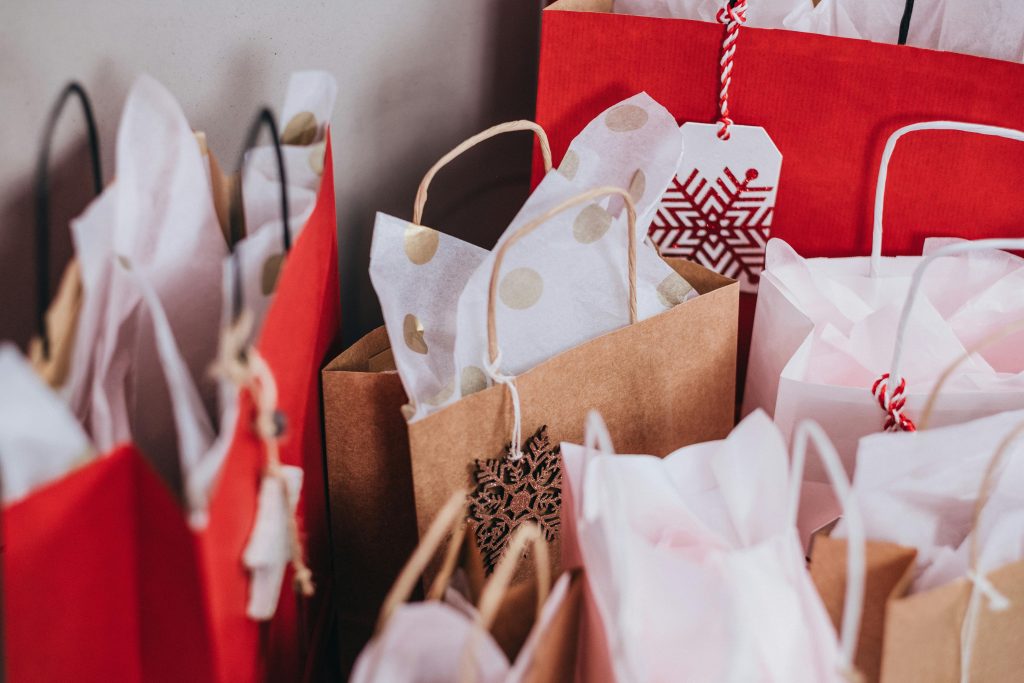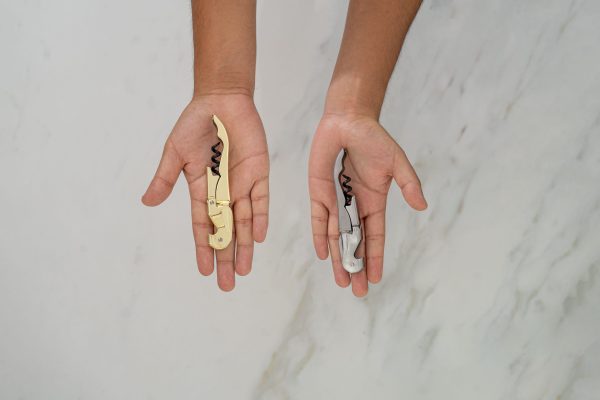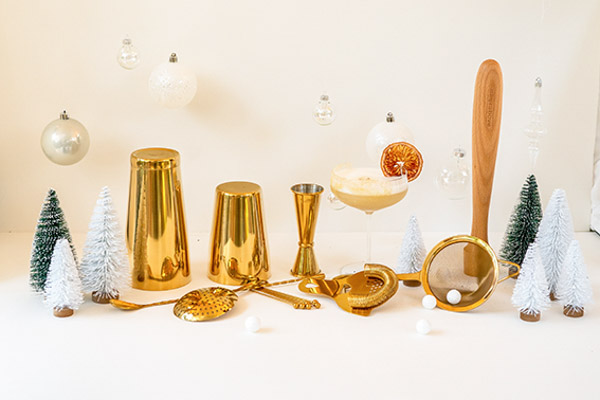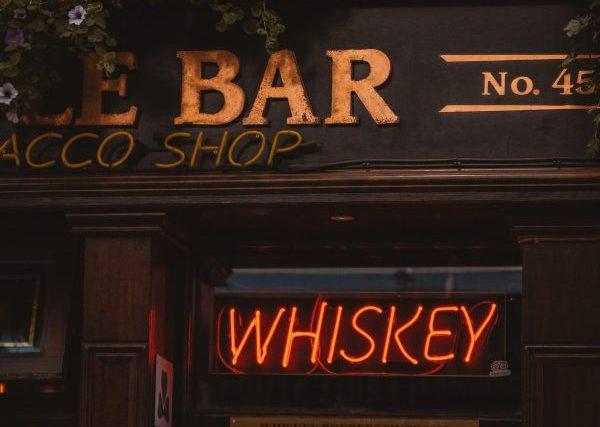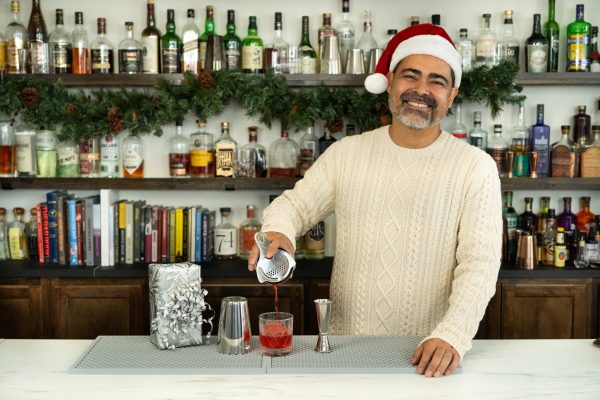We here at A Bar Above obviously love cocktails-- as do you, I’m sure, since you’re on this site. And the last two years have certainly given us all the reasons to pour drinks. But “Dry January”-- or any...
We here at A Bar Above obviously love cocktails– as do you, I’m sure, since you’re on this site. And the last two years have certainly given us all the reasons to pour drinks. But “Dry January”– or any other month, for that matter– can be a beneficial reset, whether your goal is breaking habits, weight loss, or getting better sleep.
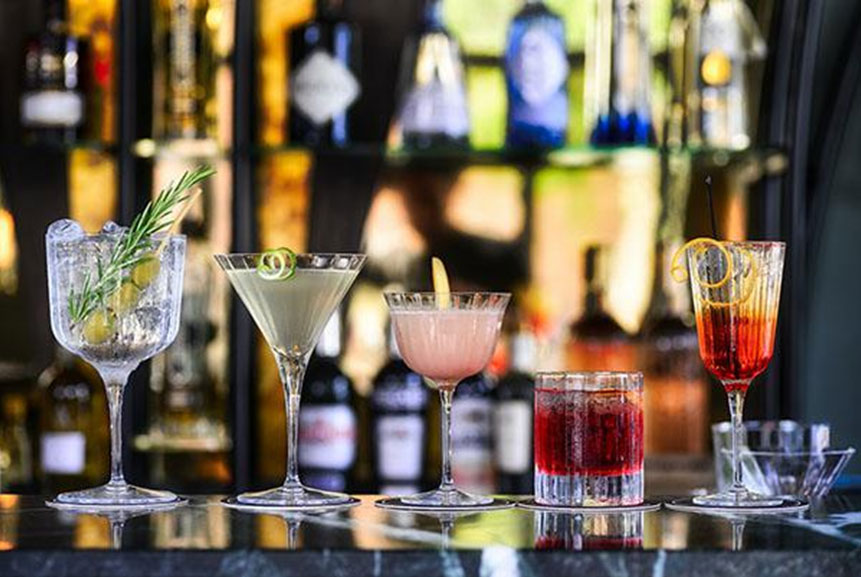
Part of pouring craft beverages is the process of discovering, developing, and sharing tasty sips with our friends and family. But “without alcohol” does not have to signal the end of delicious and the beginning of boring!
This guide to craft mocktails will deliver all of the flavor and flair of cocktails while helping you keep your commitment to living spirit-free for Dry January and beyond. Plus, for those of us in the hospitality industry, offering a thoughtfully-crafted, non-alcoholic option for guests who are not drinking alcohol– for whatever reason– is just excellent service and good business.
Note: You’ll need the same equipment for non-alcoholic beverages as you would for alcoholic cocktails, so make sure to visit the A Bar Above shop for all your barware if your home bar isn’t already stocked.
WHAT IS A CRAFT MOCKTAIL?
Surprisingly, the origin word “mocktail” doesn’t come from a sober mixologist but instead from a 1979 Libbey Glass advertisement targeting both alcohol-drinkers and those who abstain from liquor. Whatever the origin, though, we have all learned by now that “mocktail” means a non-alcoholic drink meant to replicate a cocktail.
Just as cocktails have moved from the frozen, blended daiquiri to the classic, hand-shaken version, so have we moved beyond the “virgin drinks” from a blender and the sickenly-sweet Shirley Temple (perhaps one of the most famous mocktails, primarily associated with children and not the sophisticated drink an adult would want to order– though no judgement if you do!) that all made “mocktails” a dirty word.
Today, we see a wide variety of non-alcoholic options under bar menu headings that include Zero ABV, No- and Low-Alcoholic Drinks, Alcohol-Free, NA Options, and Zero Proof. By whatever name you call them, craft mocktails still require care, skill, and fresh ingredients like their boozy cousins. In short, they should be as well-crafted as an alcoholic cocktail.
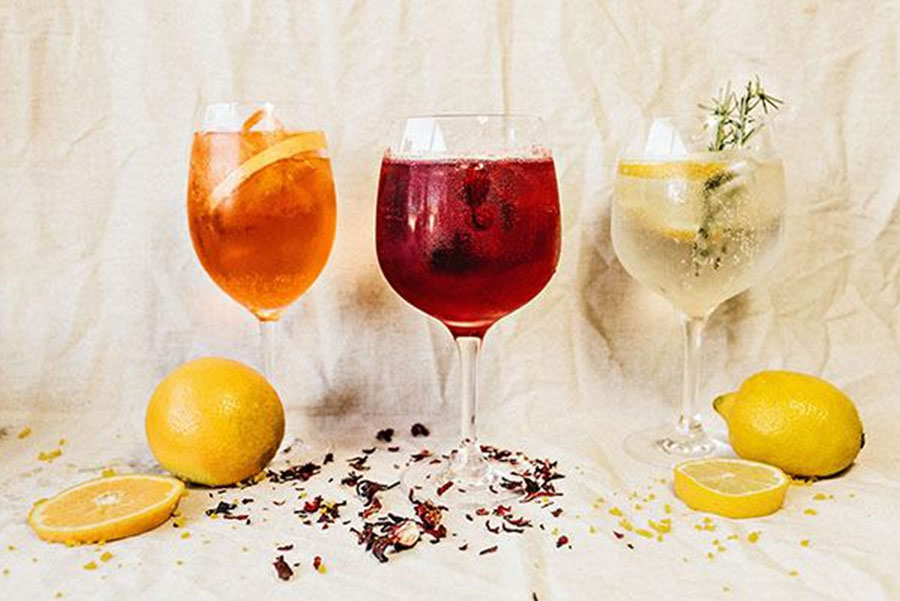
Photo by Jonathan Borba via Unsplash
TRENDS IN ALCOHOL-FREE COCKTAILS
At one time, being the designated driver or a sober companion meant only getting to select from sugary soft drinks, juice, tonic or soda water, lousy coffee, or tap water (maybe sparkling water if you’re lucky). Not very appealing options. The “big upgrade” to this list was the addition of non-alcoholic beer like O’Douls.
However, as reflected in the 2020 Cocktail Trends Report, the #1 trend is low/no alcohol drinks. The craft mocktail is a rising star due to more mindful drinking and hospitality professionals serving up what their guests want. There are new, exciting spirit-free cocktails as well as recreations of your favorite drinks, sans alcohol.
What gets measured gets improved, and a delicious non-alcoholic drink is no exception. If you are in doubt, consider this:
Alcohol-free “sober bars” are popping up in the US and all around the world. Non-alcoholic bar programs are getting the attention previously reserved for craft cocktails. Zero-proof spirits like Seedlip are being produced, marketed, and added to the back bar next to the classics. DIY mocktail books abound, such as the famed Aviary Restaurant’s Zero, A New Approach to Non-Alcoholic Drinks.But enough talk: Let’s make some mocktails!
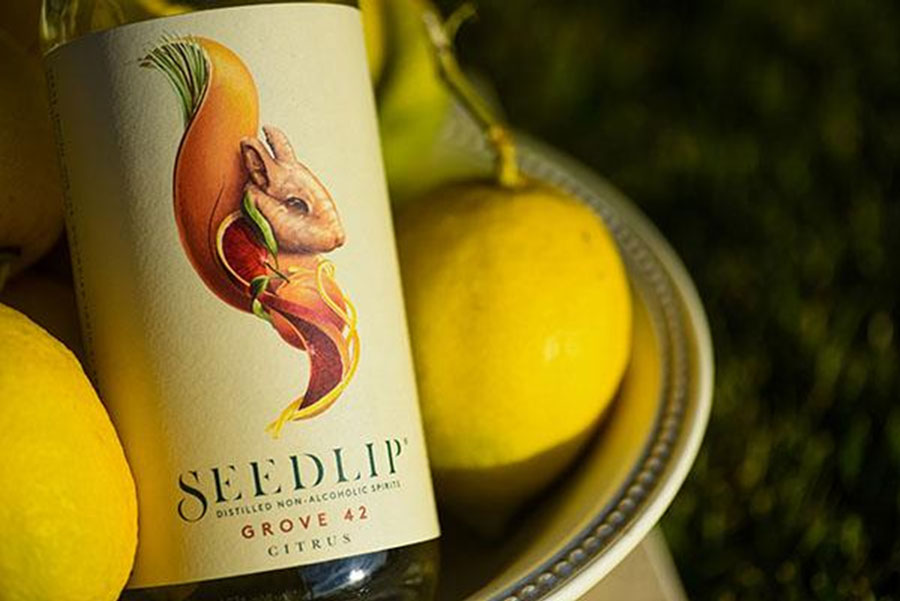
Photo via Unsplash
GETTING STARTED MAKING CRAFT MOCKTAILS
My three principles of “craft” apply to all mixed drinks, with or without alcohol. It can be challenging, but with a little bit of practice– let’s say a month, give or take– you’ll be a mocktail mixologist.
1. CARE
Give serious consideration to the non-alcoholic beverage you’re creating. Who will be drinking it and when? This includes considering the food that will complement the experience.
Who – Do they abstain from alcohol entirely, or can you use dashes of bitters, which will add a tiny amount of alcohol while upping the flavor profile? When – What’s the occasion and setting? The “who” and “when” answers will influence the glass and temperature, as well as the flavors and textures desired.Remember, the drink’s glass and size of your mocktail should match that of any alcoholic beverage so as to not draw attention to the person who isn’t drinking alcohol.
2. SKILL
Your objective is to mix a flavorful, complex, balanced, and beautiful drink:
Flavorful – The drink should have a distinct flavor, not a watered-down juice or weak hint of something added to soda water. Complex – Complexity will come from using various flavors and aromas that blend harmoniously or provide an exciting contrast. Balance – Balance is the interplay between the five basic taste elements: sweet, salty, sour, bitter, and umami. A well-balanced drink will use multiple ingredients in proportion so that a single flavor does not leave the drink tasting one-dimensional and so a harmony between flavor profiles is created. Beauty – We eat and drink with our eyes first. Use garnishes, ice, and glassware to create flair and enhance the experience of the drink you are making.3. FRESH INGREDIENTS
The craft cocktail movement is founded on the use of fresh juices, housemade syrups, shrubs, tinctures, fresh-picked herbs and flowers, and artisan brands. So, too, are craft mocktails.
Juice – An electric juicer may become part of your essential bar equipment. It will allow you to go beyond using just fresh citrus juice. Syrups, Shrubs, and Tinctures – These provide not only sweetness but enhance your drinks with tartness, herbs, spices, fruit flavors, and peppers to build balance and complexity. Fresh-picked – Both taste and aroma create flavor. The use of fresh herbs and flowers in juices, syrups, and garnishes enhances the flavors you are making while also setting expectations visually. Artisan – Whenever possible, choose to make your mocktail ingredients at home or purchase brands that embrace the craft movement’s ethos, such as Amass.INSPIRED FLAVORS: COCKTAIL BOOKS THAT EXPLAIN FLAVOR PROFILES
Aristotle said, “The whole is greater than the sum of its parts.” That is true with mocktails and cocktails alike. The interplay between a dash-of-this and a small-amount-of-that mixed with something else can create a flavor profile that is inspired.
These books helped me to understand flavor pairing. I consult them regularly to expand my knowledge of flavor and creativity:
The Drunken Botanist, The Plants That Create The World’s Great Drinks by Amy Stewart The Flavor Bible, The Essential Guide to Culinary Creativity, Based On The Wisdom of America’s Most Imaginative Chefs by Karen Page and Andrew Dornenburg The Flavor Matrix, The Art and Science of Pairing Common Ingredients to Create Extraordinary Dishes by James Briscione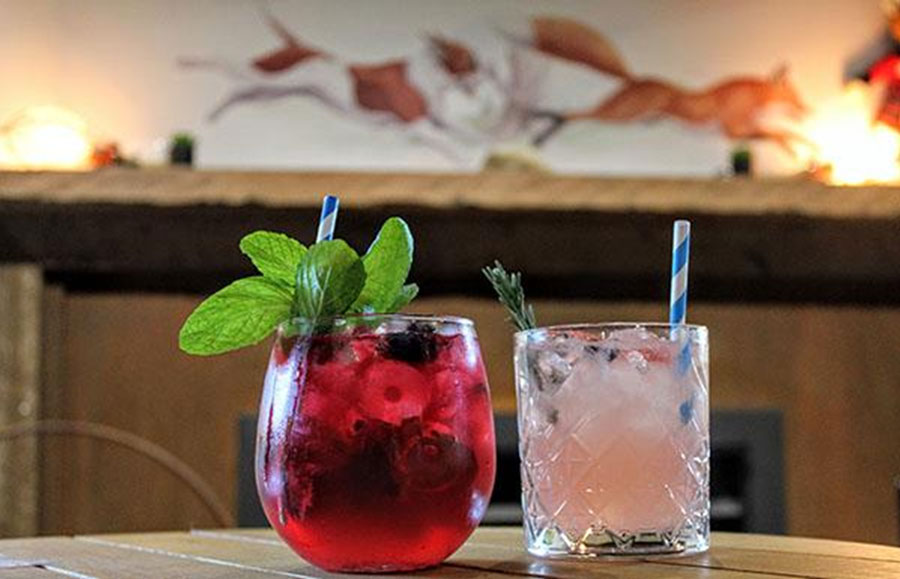
Photo via Unsplash
CRAFT NON-ALCOHOLIC DRINKS: MOCKTAIL RECIPES
Thanks to pre-made non-alcoholic cocktails like DRY and SPIRITY, craft mocktails can be as quick and painless as opening a can– after all, craft beer is still craft. Or it can be as involved as making zero ABV spirits, developing syrups, and handcrafting bitters all at home. If you don’t want to do everything yourself, you can create non-alcoholic cocktails from pre-made kits like the pHaux-loma mocktail from Pink House Alchemy, complete with Mexican chile syrup.
For me, it usually falls somewhere in between: I buy some things and make others.
All three options above are perfect depending on the occasion and how much time and equipment you have available.
QUICK AND EASY ZERO-PROOF COCKTAILS
Remember, mocktails don’t have to mean sugary and sweet. Creating complex, well-balanced, and attractive alcohol-free drinks can be as quick as combining bitters, shrubs, or balsamic vinegar with the mixer of your choice, along with a thoughtful garnish. The lack of alcohol doesn’t hold back flavor but also doesn’t have to add a bunch of sugar, either.
BALSAMIC VINEGAR AND SODA ON THE ROCK(S)
I keep a supply of flavored balsamic vinegar on my bar right next to my bitters collection. Currently, I have lemongrass & mint, cranberry-pear, black mission fig, and blueberry flavors on hand. Simply mixing them with soda water makes an excellent drink!
I use ¼ – ½ ounce of balsamic vinegar (more or less based on personal preference) Fill glass with soda waterPresentation:
Depending on the flavor and desired presentation, I use one-inch ice cubes or a single large, hand-cut cube.
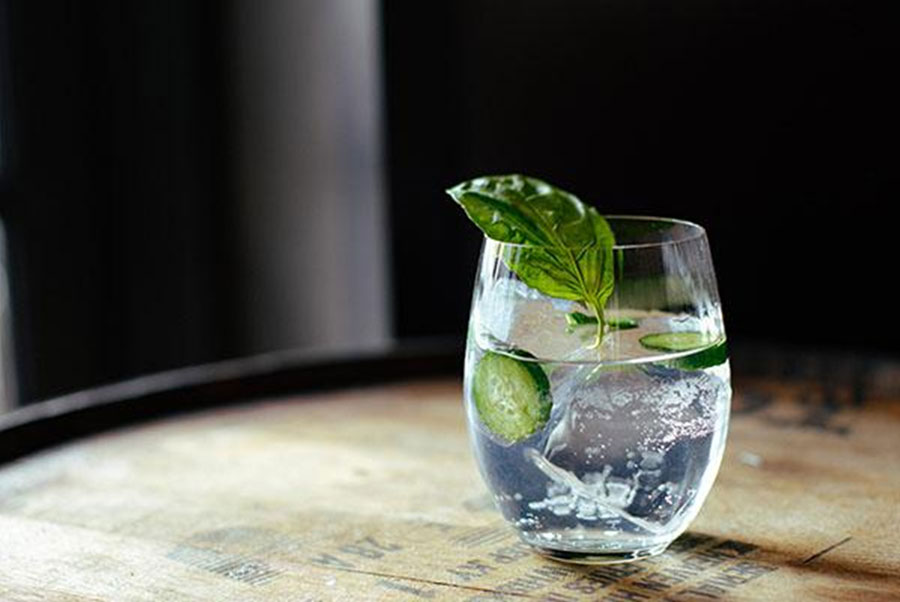
Photo by Devin Berko via Unsplash
LEMONGRASS AND MINT COOLER
This refreshing drink is super easy with only two ingredients and offers the surprising blend of lemongrass with just a hint of mint.
¼ – ½ ounce of Lemongrass and Mint White Balsamic Vinegar 4 ounces of soda waterPresentation:
Collins glass Four one-inch ice cubes Garnish with a sprig of fresh mint and a twist of lemonBITTERS AND SODA
Bitters and soda is a classic non-alcoholic choice. Yes, bitters are generally made by using alcohol to extract flavors from roots, herbs, leaves, and fruit; but when used in small quantities, it has no intoxicating effect. In the US, a beverage with less than .5% Alcohol By Volume (ABV) is considered non-alcoholic. There are also non-alcoholic bitters available.
In your local liquor store and online, you’ll find a wide array of bitters. There is no reason to limit yourself to Angostura Bitters only!
Bitters and soda are also readily available pre-mixed in a can from companies like Hella and Angostura. It’s also incredibly convenient and easy to make your own, though:
2 – 6 dashes of bitters 4 – 8 ounces of soda waterPresentation:
Pint, rocks, or Collins glass– Match your cocktail glass of choice and portion size to the alcoholic drinks served (if at a bar, restaurant, or party where others are drinking alcohol). Garnish with either a complementing or contrasting flavor element to the bitters used. The book Flavor Matrix is invaluable for great ideas.TONIC WATER & LIME
Readily available and straightforward, this go-to, non-alcoholic choice can be full of sugar. Still, with a few upgrades, you can reduce the sugar and increase flavor.
“Elevated” Tonic and Lime
4 – 6 ounces of Fever-Tree Tonic 3 – 6 dashes of woodland bitters from Portland Bitters ProjectPresentation:
Large rocks or Collins glass– Again, match the glassware and portion to the alcoholic drinks served. Garnish with a lime wheel and rosemary sprig.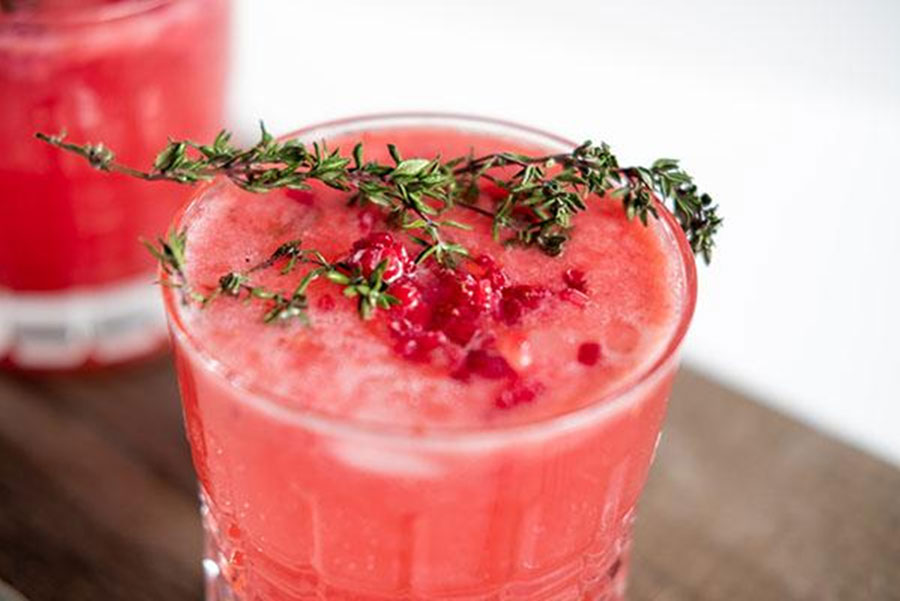
Photo via Unsplash
MAKE AND BUY INGREDIENTS FOR MOCKTAILS AND MORE NON-ALCOHOLIC COCKTAIL RECIPES
This is what craft cocktail enthusiasts and bartenders do most of the time with craft cocktails. We purchase spirits, vermouth, bitters, etc., and then make syrups, shrubs, and other easy-to-prepare ingredients. Craft mocktails are no different than their alcoholic counterparts!
Today, there are many brands and choices of spirits when you are stocking your sober bar. For a deeper dive, check out the Mixology Talk podcast #177 as Chris Tunstall, founder of A Bar Above, talks all about non-alcoholic cocktails with Laura Lashley, a Brand Ambassador for Seedlip, a spirit-free craft spirit company.
We’ll dive in by focusing on three non-alcoholic versions of classic cocktails: The Old Fashioned, the Daiquiri, and the Negroni. With a little bit of online searching, you’ll easily find what you’re looking for to make zero-proof versions of these– and any other favorite cocktails you’d like to try without booze.
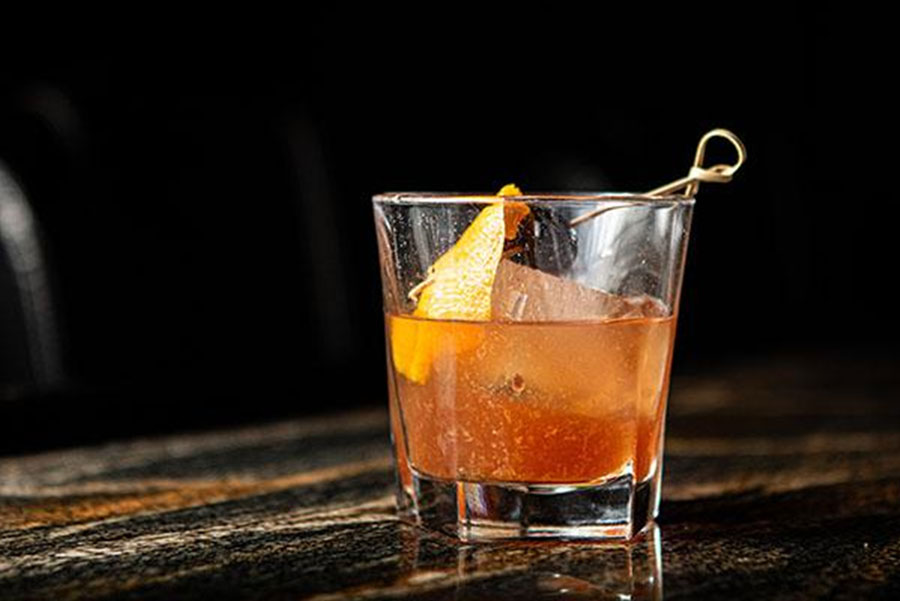
OLD FASHIONED
2 ounces Ritual Whiskey Alternative ¼ ounce Simple Syrup 2 Dashes Stirrings Blood Orange Non-alcoholic BittersTechnique:
Add simple syrup, Stirrings bitters, and Ritual whiskey to your mixing glass. Add ice and stir with a bar spoon to chill. Strain with a julep strainer into a rocks glass with ice.Presentation:
Rocks glass with one-inch ice cubes or one large rock Orange peel garnishNEGRONI
1-ounce Seedlip Spice 94 1-ounce Lyre’s Italian Orange 1-ounce VERSIN non-alcoholic vermouthTechnique:
Add Seedlip Spice 94, Lyre’s Italian Orange, and VERSIN vermouth to your mixing glass. Add ice and stir to chill. Strain with a julep strainer into a coupe or rocks glass.Presentation:
Coupe glass with no ice, or a rocks glass with one-inch ice cubes or one large rock Garnish with an orange twist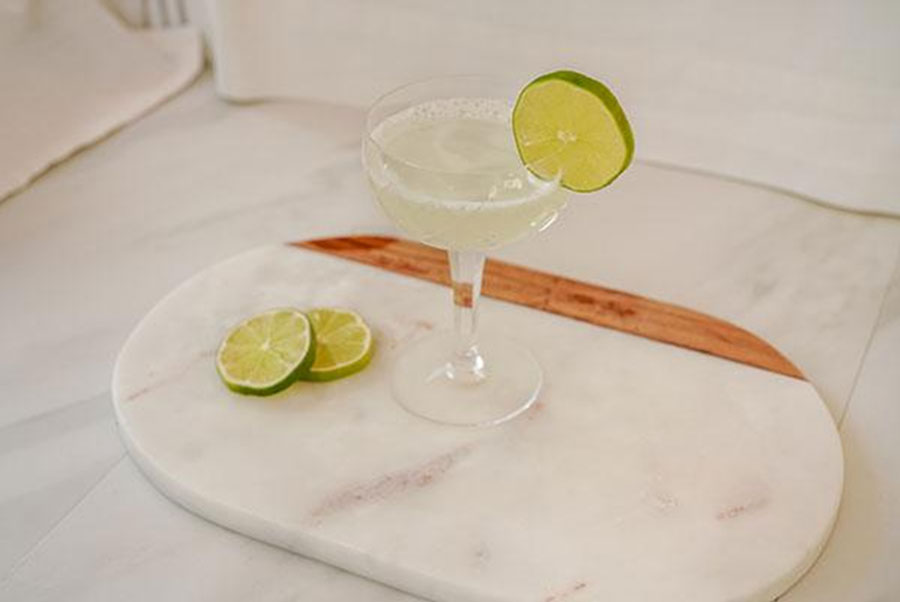
Copyright A Bar Above
DAIQUIRI
2 ounces Ronsin non-alcoholic rum ¾ ounce fresh lime juice ¾ ounce simple syrupTechnique:
Add simple syrup, lime juice, and Ronsin to your small cocktail shaker tin. Add ice and shake for 10 seconds. Double strain into a coupe glass.Presentation:
Coupe glass Lime wedge for garnishDIY MIXOLOGY: MAKING YOUR OWN COCKTAIL INGREDIENTS AND NON-ALCOHOLIC SPIRITS
If you are a total cocktail nerd who loves making a craft homemade mocktail, I highly suggest you order Zero, A New Approach to Non-alcoholic Drinks. In it, you’ll find the guidance to make your own Zero ABV backbar inspired by gin, whiskey, tequila, Triple Sec, mezcal, rum, Amaro, Chartreuse, Fernet, Campari, and classic bitters.
I started with gin. It’s complex, interesting, and very drinkable– and it took just a few hours after gathering everything I needed. Most of the whole spices were readily available in the bulk spice section of a gourmet grocery store. A few ingredients– vegetable glycerin and angelica root, specifically– I bought on Amazon.
Zero ABV gin worked well with tonic and in a sour cocktail, but I wouldn’t try to tell a gin drinker that it’s gin. In my next batch, I will try to amplify the juniper notes by cruising the juniper berries more.
The recipe cautioned me not to puree the juniper berries, so I may have been too cautious, leaving the tincture lacking the full gin flavor that I enjoy.
If you go the DIY route, it will help to have a few things on-hand:
Blender Digital scales– both a kitchen scale and a gram scale Sous vide JuicerNote: The blender and scales are the minimum starting place. You’ll be using your blender to make tinctures– concentrated extracts made by blending up spices, herbs, or barks– in a liquid. In the zero ABV gin, I blended juniper berries in a combination of vegetable glycerin and water.
Many of the ingredients you’ll be working with are very aromatic, flavorful, and lightweight — so a little bit will go a long way! Thus, you’ll be weighing out one- to five-gram portions on a gram scale instead of using measuring spoons.
Water, fruit juice, and vegetable glycerin (your heavy ingredients) are too much for the tiny gram scale, though. That’s why you’ll also need a kitchen scale. Plus, there are many uses for a scale once it’s part of your kitchen set up. You can weigh flour for baking, sugar and water for making syrups, and food for portion control.

Photo by Jez Timms via Unsplash
DIY NON-ALCOHOLIC GIN RECIPE from Zero
Gather:
300 g vegetable glycerin 150 g juniper berries 150 g water 750 g water 17 g coriander seeds 17 g lemon peel, removed with a peeler 5 g fennel seeds 4 g cinnamon sticks, coarsely crushed 3 g fresh ginger, peeled and sliced thinly against the fibers 2 g star anise, coarsely crushed 1 g angelica root 1 g green cardamom seeds 1 g kosher saltTechnique:
To make the juniper tincture, combine the glycerin, juniper, and 150 g of water in a blender and pulse once or twice to break up the juniper berries (take care not to puree the mixture). Transfer to an airtight container and allow to steep in the refrigerator overnight. The following day, strain the mixture through a fine mesh strainer, discarding any solids. Set this aside.
If you have sous vide equipment:
Combine 750 g of water and all of the remaining ingredients in a vacuum bag and seal. Cook in sous vide at 90° C (195° F) for one hour. Meanwhile, prepare an ice bath. Transfer the bag to the ice bath to chill completely.
If you don’t have sous vide equipment:
Combine 750 g of water and all of the remaining ingredients in a medium saucepan, and bring the mixture to a boil over high heat. Cover the pot and reduce the heat to maintain a slow simmer for one hour. Remove from heat and allow to cool completely.
Once cool:
Strain the mixture through a fine mesh strainer, discarding solids. Add 250 g of the juniper tincture to the strained liquid, stirring to combine. Transfer to an airtight container and reserve in the refrigerator.
Overall, I’m delighted with the outcome of my own spirit-free gin. I know my craft mocktail menu options will be endless when I complete the backbar. Next up is Zero ABV American whiskey!
NOW ENJOY DRY JANUARY AND BEING ALCOHOL-FREE WITH YOUR NEW FAVORITE MOCKTAILS
Limitations can inspire creativity. Eliminating alcohol is just such a boundary. Writing this guide to craft mocktails has shown me that complex, well-balanced, and visually stimulating non-alcoholic drinks are more than possible– and can be delicious, too!
Whether you just need a break from alcohol, want to experience health benefits from sober living (for an entire month or longer), or just want to limit your alcohol intake every now and then, now you know that spirit-free cocktails can be just as amazing as boozy cocktails.
And if you want to take your sober challenge a little further, look into our friends at Sunnyside, an app for managing Dry January and your general alcohol intake to help you become a more mindful drinker.
Whatever you call them, mocktails, non-alcoholic cocktails, and zero-proof drinks are a necessary part of a home bar or professional bar program for many people. So why limit yourself and your customers to the boring or super-sweet beverages of yesteryear?
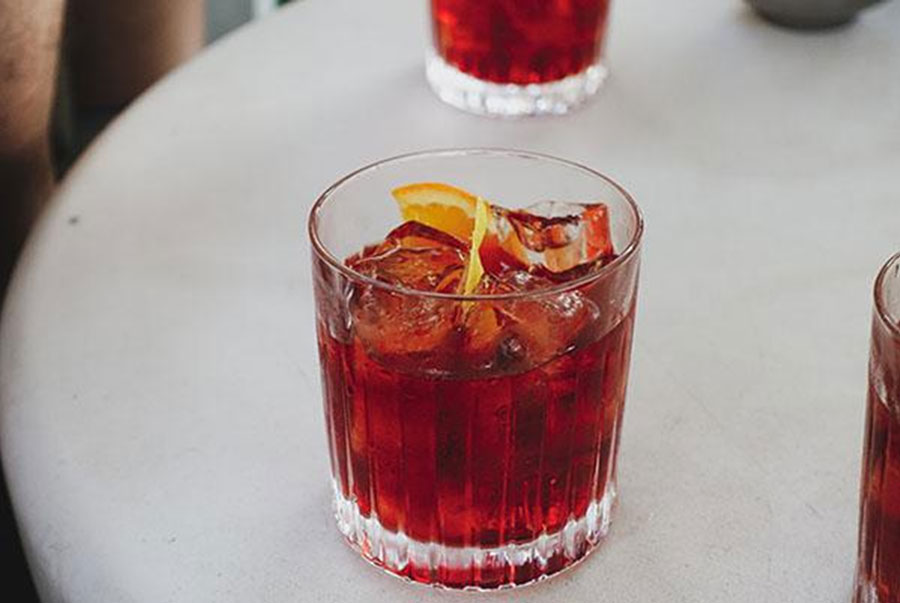
Photo by Ergita Sela via Unsplash
Hopefully this guide has inspired you the way it did me. We’d love to see what spirit-free cocktails you create: Leave a comment or join the A Bar Above Craft Cocktail Club on Facebook to show off your favorite alcohol-free option for Dry January– and for living a sober lifestyle all year long.





